One day, if you ski or snowboard long enough, and well enough, you’ll end up in Chamonix – unable to resist the lure of its hard-core terrain, and stunning glacial scenery. Don’t rush to get here, though. It’s far better to wait until you’ve got the skills, and the courage, to do it justice.
Altitude: 1035m
Lifts: 72 in Chamonix-Mont Blanc
Top Lift: 3842m
Ski area: 150km of piste
Adult lift pass: 228€ to 345€ for six days Chamonix Pass
Official Site |
Ski Map |
Webcam
Essential Advice for the Perfect Trip
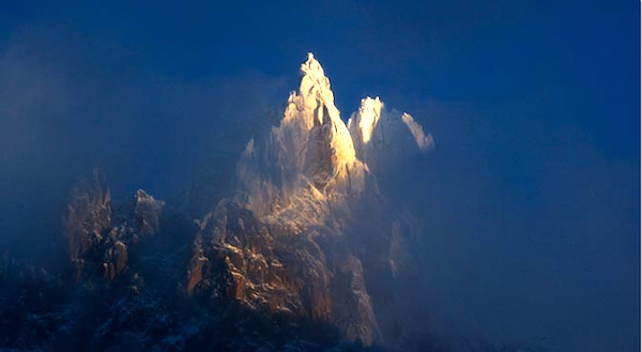
Tourism first came to Chamonix in 1741, when two heavily-armed English explorers, William Windham and Richard Pococke, took three days to reach the valley from Geneva. Pococke, for reasons best known to himself, was dressed as an Arab.
They gazed up at the ice fields and vertiginous crags in wonder: and cannot, in their wildest dreams, have imagined how their fellow man would one day use this dazzling and dangerous landscape as a playground.
The extreme-skiing capital of the world
Now of course, the little town of fin-de-siecle villas and grand hotels is stuffed to the gunwales with ambitious skiers and boarders. They’ve come from all over the world to prove themselves against the long, steep descents of the Mont Blanc massif, and they’ve imbued the place with special atmosphere. No doubt about it: this is one of the greats.
Don’t expect it to be like other ski areas you’ve visited, though. Chamonix looks and feels like a workaday town, rather than a ski resort, and its satellite villages stretch for miles up and down a vast valley. The lift system does the same – with big, impassable gaps in between. Whatever you do here – whether it’s cruising the pistes or plunging down couloirs – you’re going to spend time commuting.
For intermediate skiers, this is a royal pain in the a*se: it’s fine for a weekend, but for a longer stay the bitty-ness of it will bug you. For those who’ve come for the rough stuff, however, it’s just part and parcel of the experience. The terrain here is just too good for it to matter.
Here’s an example of what we’re talking about, posted a few years ago by the absurdly talented guide and film-maker Seb Montaz-Rosset.
In Chamonix you can party as hard as you can ski – mainly on two streets: rue Docteur Paccard and rue des Moulins, and when it comes to eating out the buzzing town offers everything from McDonalds to blow-the-budget gastrodomes. On the mountain it’s a different story, and it’s often said that the best Chamonix lunch comes out of a rucksack. That said, there are a few atmospheric places in which to take a break from the rough and tough skiing.
But Chamonix is not just for skiing – bizarrely, it’s also a good choice for non-skiers too, as there are plenty of other activities on offer here. You can take a trip on the Montenvers Mer de Glace cog railway or up the Aiguille du Midi cable-car for spectacular views. You can paraglide, horse-ride, go husky-sledding, or just walk. You can even try virtual climbing – thanks to the Tairraz Exhibition Centre (+33 450 55 53 93). It has an interactive exhibition where you can experience the sensation of mountaineering, discovering the five major summits of the Alps using mountaineering equipment.
Guide to the Mountain
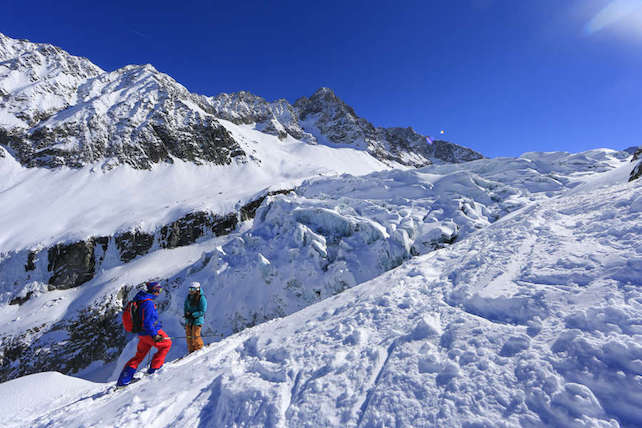
The Chamonix valley is long, high and steep, but the lift system gives access only to small bits of it. This isn’t a problem if you’re tackling the big off-piste descents for which it’s so deservedly famous. But it will frustrate you if you’re used to the seamless on-piste cruising of resorts like Courchevel and Tignes.
These are the main sectors:
1. Aiguille du Midi cable-car: leaving from the southern end of Chamonix, and rising to 3842m, it gives access to the celebrated 22km Vallee Blanche glacier run, through staggeringly beautiful scenery. What’s more, the classic route is an easy ski, once you’ve hiked down from the cable-car. See our Intermediate and Advanced sections for more.
2. Le Brevent and La Flegere: two separate, south-facing areas above Chamonix – which are linked by cable-car, and offer mind-blowing views across the valley towards the Aiguille Verte and the Mont Blanc massif. There are some nice pistes here, though most are fairly short, and there are queues for the lifts at weekends. There’s good powder skiing/boarding here after a snowfall, too: Le Brevent has the steeper stuff, La Flegere the more rolling terrain.
3. Les Grands Montets: the most popular sector for lift-serviced off-piste, and one of the world’s greatest ski mountains. The pistes here are long, and snowsure – but what makes this place famous are the big, backcountry descents such as the Pas de Chevre. For steep on-piste skiing, this is the place to head – notably for the two blacks, Point de Vue and Pylones. When linked to the Pierre a Ric red to the valley floor, either will make for a superb and thigh-bursting 2035m descent.
https://www.youtube.com/watch?v=fbHd2k-9WFE
4. Le Tour and Vallorcine: known as La Domaine de Balme, is up against the Swiss border, at the far end of the Chamonix Valley. There’s been a lot of new building in recent years in Vallorcine, with new infrastructure added on the mountain. The area offers some good novice terrain, some rewarding runs on the Col de Balme and great tree-skiing down into Vallorcines. You need to be very careful off-piste, however, because of the avalanche risk. “It’s full of wind-slabs,” says guide Roland Stieger, who’s worked in the valley for 25 years. “It’s the place I am most tense when I ski.”
5. Les Houches (see our separate resort report): at the Geneva end of the valley, and home to the valley’s World Cup downhill race course (the Kandahar). The altitude is rather low for these globally-warmed times, but the pistes are long and tree-lined, and it’s the best place to ski when it’s snowing hard or the light is flat. Off-piste groups are often brought here during a blizzard by their guides – to ski delicious powder on top of a firm surface of groomed pistes. Recently, there’s been a spate of building and restoration here, with new hotels, apartments and even a brewpub opening up.
Also included in the Chamonix-Mont Blanc area are Le Tourchet/Bonneville (two lifts), Les Chosalets (two lifts), and Les Planards (three lifts).
Chamonix for intermediates
Lots of Chamonix’s on-piste skiing is excellent in places, but broken up into itty-bitty packets, with boring commutes (by a free shuttle bus service) and/or lift queues in between. We wouldn’t recommend it for a whole week, but for a weekend – provided you don’t mind riding the buses, it’s okay.
Of all the areas, La Domaine de Balme, above the village of Le Tour is the best place to cut the corduroy, on well-groomed and snowsure pistes. There’s a good mix of open and tree-lined terrain here too – the only drawback being the bus ride from Chamonix to get there (in fact, if all you want to do is ski them, you should consider staying in Le Tour or Vallorcine rather than in the main town).
The Vallee Blanche
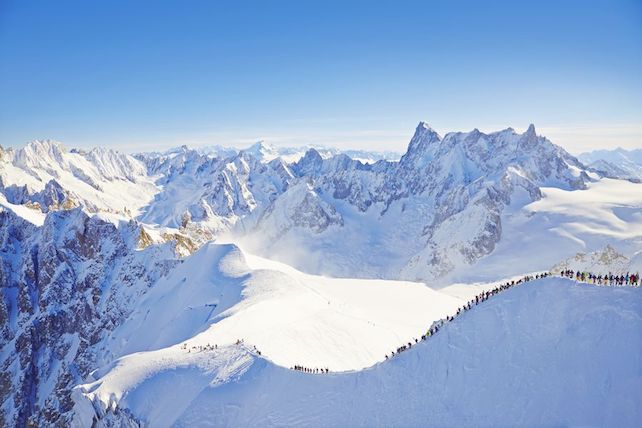
Chamonix is dominated by the 3842m Aiguille du Midi, reached by cable-car from the southern side of town. This is the starting point for the famous Vallee Blanche, a glorious 22km descent past yawning crevasses and house-sized seracs (ice boulders) all the way back to Chamonix. Anyone who can ski parallel, has a head for heights, and can handle the odd mogul and patch of ice can tackle it – but a guide is essential.
The worst bit, by far, is the start. To get down to from the cable-car station, you have to walk down a long series of ice steps cut into the spine of ridge. They’re not in themselves always difficult, but the 2000m sheer drop to your left gives plenty of people the wobbles.
After that, the easiest of the four routes is surprisingly flat – too flat, in fact, for snowboarders – and the only real distractions from the stunning scenery are the crowds, and the variable snow conditions (don’t come here when the snow is thin).
Freestyle is not what Chamonix is about
There’s a small terrain park at Les Bossons, on the road out of town towards Les Houches, and another on the Grands Montets. But for the most part, if anyone’s catching air here, it’s on natural lips and rollers on the mountains. La Flegere is a favourite sector of the lift system amongst the big-air brigade. However, just because it’s underused, that doesn’t mean the terrain park is entirely bereft of talent.
Experimenting with new terrain?
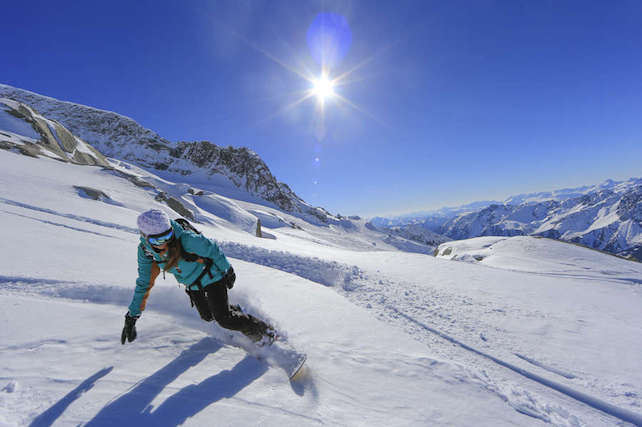
We still think there are other resorts – Verbier, Val d’Isere, Tignes, Jackson Hole, for example – which provide a better environment for advanced (but not expert) skiers. But there’s a lot to be said for the inspiration Chamonix’s stunning scenery and adventurous spirit can provide.
There’s plenty of easily-accessed off-piste here too, notably above the Lognan cable-car station, though it’s skied out in an instant after a snowfall, and quickly becomes a vast mogul field. If what you’re after is easy powder to experiment on, then you’re better off over in the Flegere sector.
One of the great testing-grounds of ski talent
Chamonix’s sky-high reputation is thoroughly deserved. It’s a shame there’s so much competition for fresh tracks on a powder day, but it’s no surprise, given the quality of the runs on offer. If you’re coming here for the first time, there’s only one rule: hire a guide. No amount of reading is going to prepare you for the challenges that await. When you do, make sure he/she has the gold-standard UIAGM qualification – and is therefore allowed to take you skiing on glaciers.
Where to Learn
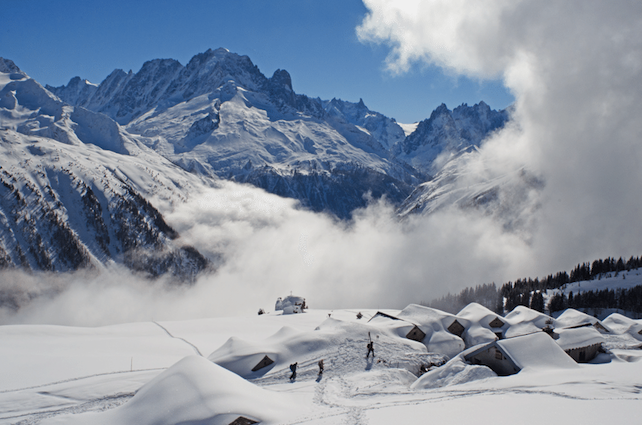
By the standards of any other ski resort, the Chamonix community of UIAGM-qualified mountain guides is huge. You’ll need its expertise too, if you plan to ski many of the most famous descents.
For beginners? Are you sure?
Several of the valley’s nursery slopes are scattered along the valley floor – assisted by snow cannons, but still vulnerable to the sun. They’re also separate from the main ski areas, so you’ll spend all your time away from the more accomplished members of the party, wondering what they’re up to, and feeling like a second-class citizen. We’d avoid them, and instead make sure you get your lessons either on the mid-mountain nursery slopes at Flegere, or at the new beginner’s area under the Tabé chairlift in the Grands Montets. Even so, you might want to consider a more beginner-friendly resort such as Alpe d’Huez instead.
There is, however, a big choice of ski schools in the valley, including ESF Chamonix or ESF Argentiere, which are the traditional choices. Ski Sensations is the international ski school here, and Evolution 2 is popular. BASS Chamonix is a British ski school in the Chamonix Valley, Summits teaches skiing and parapet, and Kailish Adventure is for on- and off-piste skiing.
Taking children to the resort
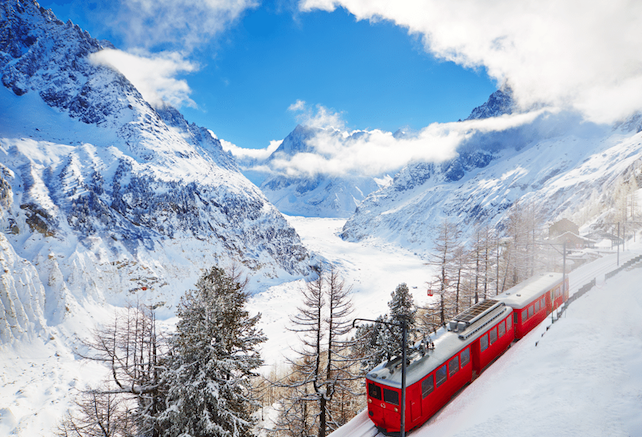
This is not the place to come with babies, small children or even older children – unless they are proficient skiers or boarders. Two ski areas up the mountain, Les Planards and Le Savoy, are set aside for children, but even these are far from easy. Evolution 2 provides lessons for children from three years old in the area.
It’s vital to hire a mountain guide
Most people who come here choose to hire a mountain guide for at least a day, and these can be booked through Association Internationale des Guides du Mont-Blanc; Compagnie des Guides de Chamonix; or one of the other companies offering properly qualified guides. Roland Stieger is a charming mountain guide and ski teacher who didn’t learn the sport himself until the age of 20, so understands what it is like not to be born on skis.
Where to Stay
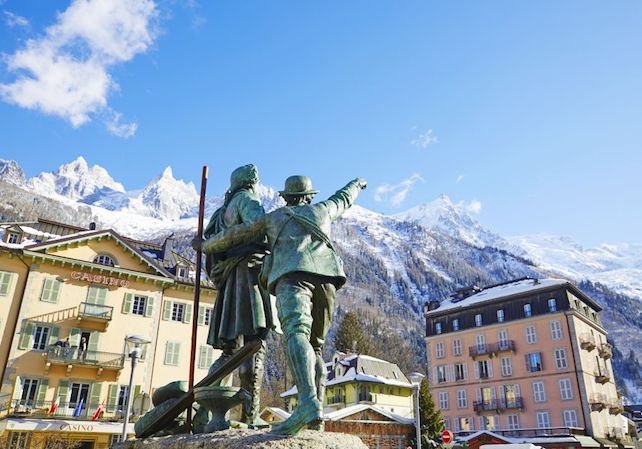
Chamonix offers the full spectrum, from youth hostels to five-star hotels, plus a wide choice of catered chalets and self-catering apartments in between. Just remember to pay close attention to the location before you book. This is a long valley – you don’t want to end up in the wrong place.
If it’s nightlife you’re after, then you need to be in Chamonix itself. This is where the cable-car for the Aiguille du Midi leaves from, too, so if the Vallee Blanche is your focus, you might want to stay here, too. More expert off-pisters are usually happiest in Argentiere – as close to the lift up the Grands Montets as possible.
The village of Les Houches often bills itself as part of Chamonix, but in many ways it’s a separate resort (and a much better place to stay if you’re skiing with children).
There are plenty of ski apartments to choose from…
Bear in mind that lots of British tour operators feature the resort, such as self-catering specialists like Erna Low, Powder Beds and Peak Retreats.
…Hotels and chalets in Chamonix centre
Chamonix is well-stocked with smart hotels and chalets – which is odd given how hard-core the skiing is here. Chamonix specialists like Hip Chalets, Collineige, Chamonix All Year, and Amazon Creek have chalets here.
Where to Eat in Chamonix
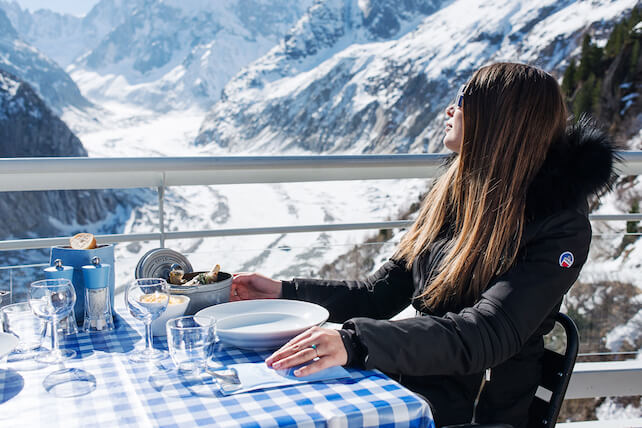
Chamonix has a few atmospheric places where you can sit down, crack open a bottle, and enjoy a well-earned meal. In the Grands Montets sector, La Cremerie du Glacier, nestled in the woods beside the Pic a Ric piste, is one of the only restaurants not owned by the lift company and is renowned for its croute fromage. Nearby, the Chalet-Refuge de Lognan is perched in an atmospheric spot overlooking the Argentiere glacier. It requires some skiing skill to reach, but its off-piste exit doesn’t stop it from being packed during peak weeks—booking ahead is essential. Plan Joran offers hearty regional specialities served in a casserole, with a sun terrace that makes it an ideal lunch stop.
If you’re skiing the Vallee Blanche, make time for a visit to Le 3842, one of the highest restaurants in Europe, reached via the Aiguille du Midi cable car and specializing in expertly grilled meats.
At Brevent, La Bergerie de Planpraz is highly recommended for its grilled meats and fresh salads. Over at Flegere, La Chavanne is a popular choice, along with the elegant waiter-service restaurant L’Adret. On the cross-country tracks in Chamonix, Le Robinson is a hidden gem with a cozy atmosphere and typical mountain cuisine.
For a more indulgent dining experience, Chamonix offers everything from casual bites to Michelin-starred gastronomy. Au Mont Chou is a must-visit for its award-winning croissants and an irresistible selection of pastries. Le Grenier serves the best crêpes in town—no arguments necessary. Café Bluebird is the place to grab a breakfast burrito and coffee before hitting the first lift. MOÖ is a Swedish-owned eatery offering simple, no-fuss dishes with high-quality ingredients. For something a little different, Cool Cats serves up the best hot dogs in town, accompanied by a selection of outrageous condiments.
For fine dining, the two-Michelin-starred restaurant of Albert 1er is the ultimate place for a special occasion, while its sister venue, Maison Carrier, provides a more rustic take on Savoyard cuisine. L’Auberge du Bois Prin is another warmly recommended choice, along with Hotel Eden in Les Praz. In the heart of Chamonix, Atmosphere sits right on the river, featuring a daily market menu strong on fish and seasonal produce. For a charming setting, L’Impossible is housed in an 18th-century wooden farmhouse and serves organic meats, fish, and vegetarian dishes.
Best Places for Après in Chamonix
Après-ski in Chamonix is just as legendary as its slopes, offering everything from high-energy parties to refined cocktail lounges.
Fubar is the go-to spot for Jaeger Bombs and some questionable life decisions. Elevation 1904 is a favourite among extreme-sport skiers, with survival-story pints and a buzzing atmosphere. Chambre Neuf is the heart of Scandi après-ski chaos, where live music and flowing beer keep the energy high. If you’re looking for a more sophisticated end to your ski day, Rue du Moulin serves expertly crafted cocktails in an intimate setting, offering a moment of après redemption.
For something unique, Le Cap-Horn in the historic Rue des Moulins offers a three-story experience, with a ground-floor jazz bar called Les Caves du Pele serving wine, tapas, and oysters late into the night. Upstairs, Cap-Blanc specializes in Japanese cuisine, while the top floor houses the main restaurant, featuring seafood, fish, and local specialities with a stunning sun terrace.
This guide to where to eat and après in Chamonix has been provided by the resort team from SkiYodl.
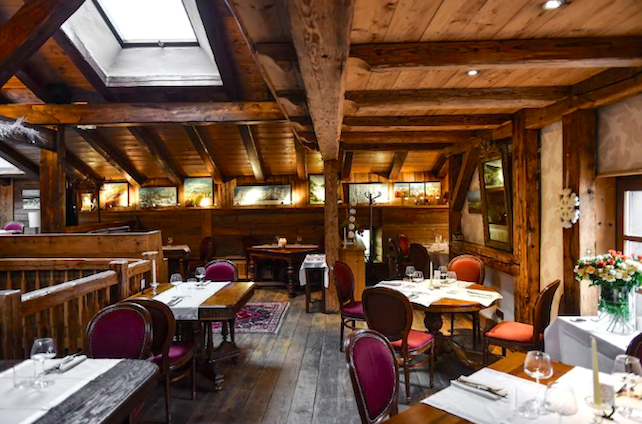
Where to Party
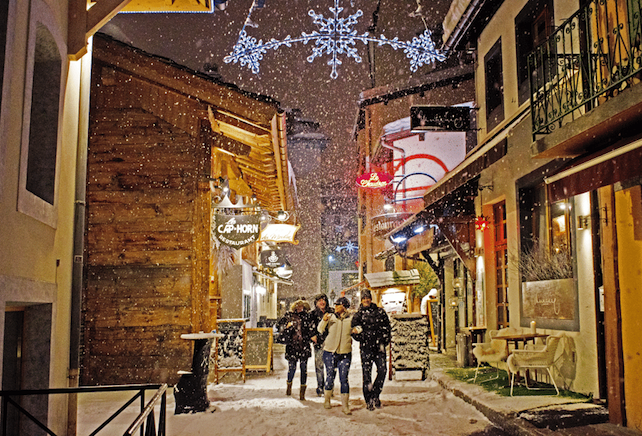
Chamonix has a livelier apres scene than almost any other French resort we know. It has a strong British flavour: too strong, some might say. But actually, you’ll find a lot of variety here, if you’re prepared to look for it.
You can party as hard as you ski
Before you come down the mountain, from December 2018, you’ll hear and see La Folie Douce, the chain of apres-ski venues known for its live music. This is its first foray into hotels. In town, top of the list for a posh drink is Mix bar (+33 611 14 96 71) on rue des Moulins. It’s a lounge serving a wide selection of cocktails, and if there’s something that you want that isn’t on the menu then it can be made for you. Different DJs play every evening. On the same street is Le Cap-Horn, a three-storey restaurant and jazz bar complex. There’s a different experience on each floor, with Les Caves bar on the ground floor. At Les Caves regular DJs and live bands play on various nights, with low-key jazz/blues early in the evenings and more upbeat tunes later on. Le Vert bar is another popular venue, with a pool table, and a projector to watch your day’s skiing. At weekends the bar hosts some top international talent.
L’Amnesia is Chamonix’s biggest club, open from 1am to dawn, and featuring international DJs and themed party nights. Le Privilege (+33 450 53 29 10) has live music and No Escape puts on cabaret acts. Late-nighters also end up at the BPM Night Club (+33 670 63 64 88) which hosts acts such as the Chippendales. Some hard-core off-posters hate these – much preferring the Chambre Neuf, in the Gustavia hotel, which is big with visiting Swedes, and therefore blessed with a high-cheekbones-high-drinking clientele. The Micro Brasserie de Chamonix – or MBC – is also popular with the same crowd. Le Garage (+33 450 53 45 26) is another popular bar. Bistrot des Sports (+33 450 53 00 46) was created for the 1924 Winter Olympic Games and retains an authentic local ambience. Gamblers can pay a visit to the casino, which is open until midnight and also has a restaurant.
Chamonix has a casino, a three-screen cinema, and a bowling alley. You can go ice-climbing, speed-riding, or try the Chamonix Alpine Coaster Luge at the Planards area. The 1300m-long track is fully lit at night.
If you’re not skiing, take the rack and pinion railway from Chamonix station to Montenvers at 1913m. Up here there’s a gorgeous panorama of the Mer de Glace glacier, the Drus and the Grands Jorasses. You can take a tour of the Grotte de Glace (ice cave) inside the heart of the glacier. Re-sculpted every year, it depicts the life of mountain people in the early 19th century, and can be entered either by a walk of around 20 minutes via a footpath, or by gondola. There are about 480 steps from the arrival of the gondola to the entrance to the cave. The eating choices at Montenvers are the restaurant at Refuge Montenvers, the bistro at Panoramique Mer de Glace, or a snack at the Glacier Bar.










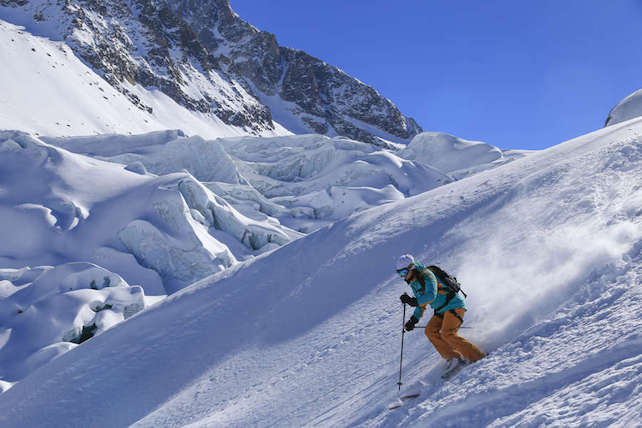
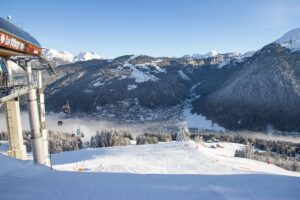
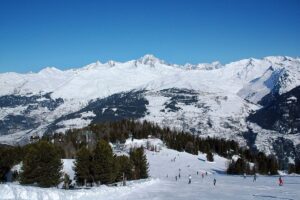
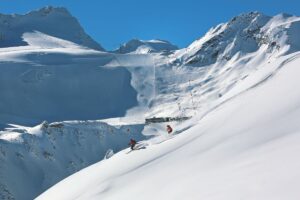
As someone who skis there every season, this is an excellent article. Spot on.